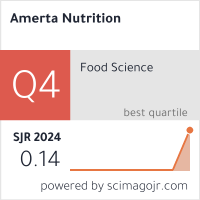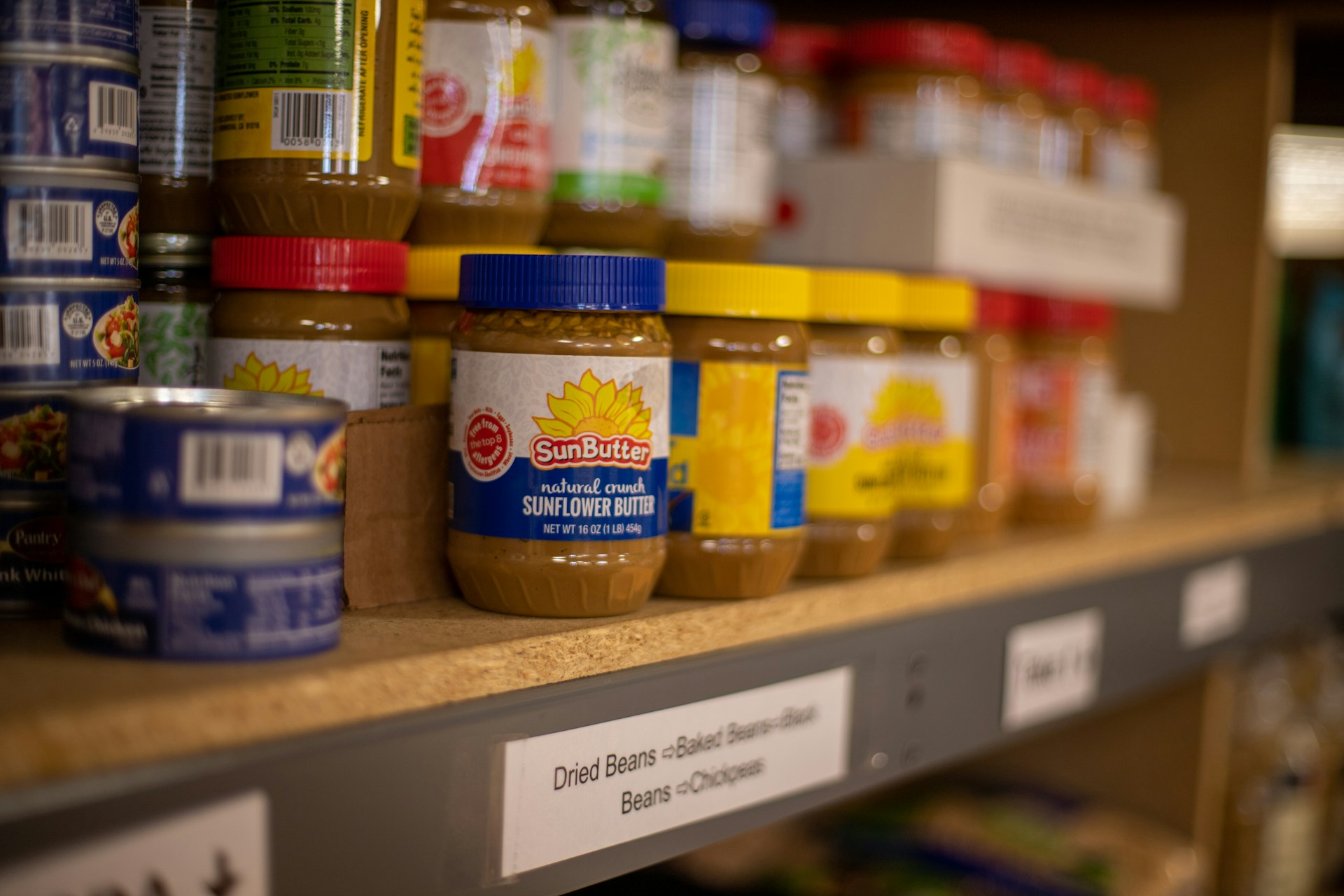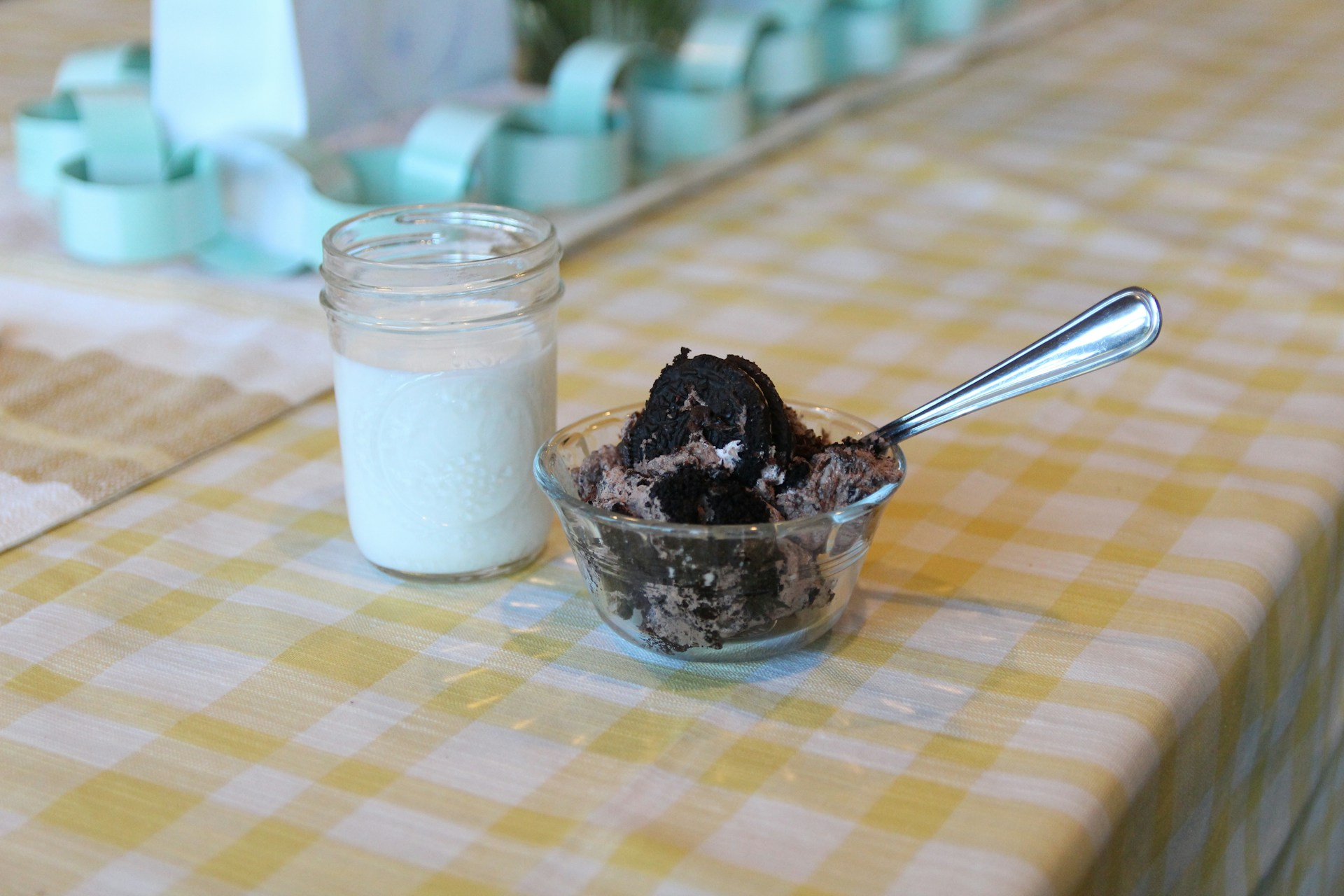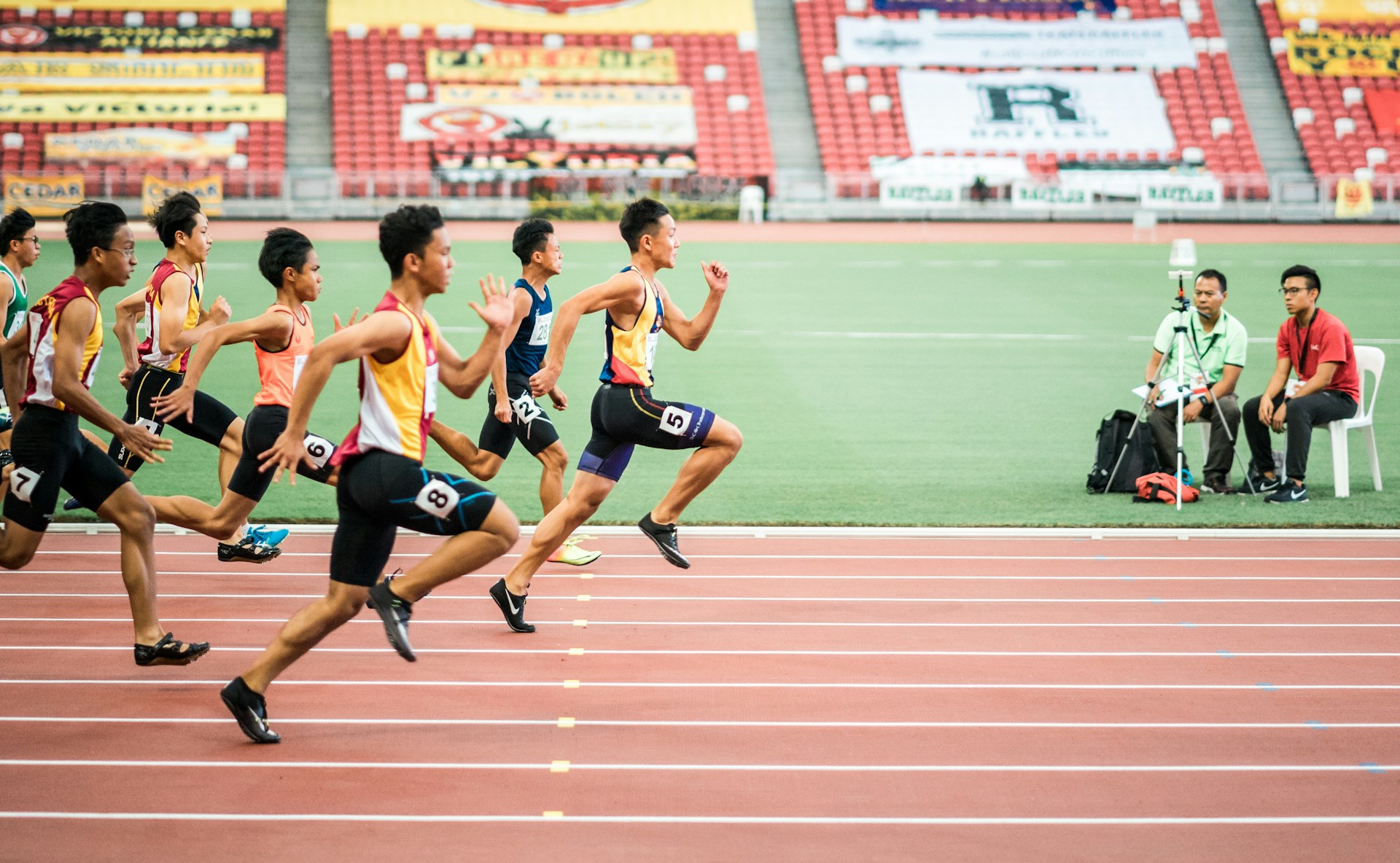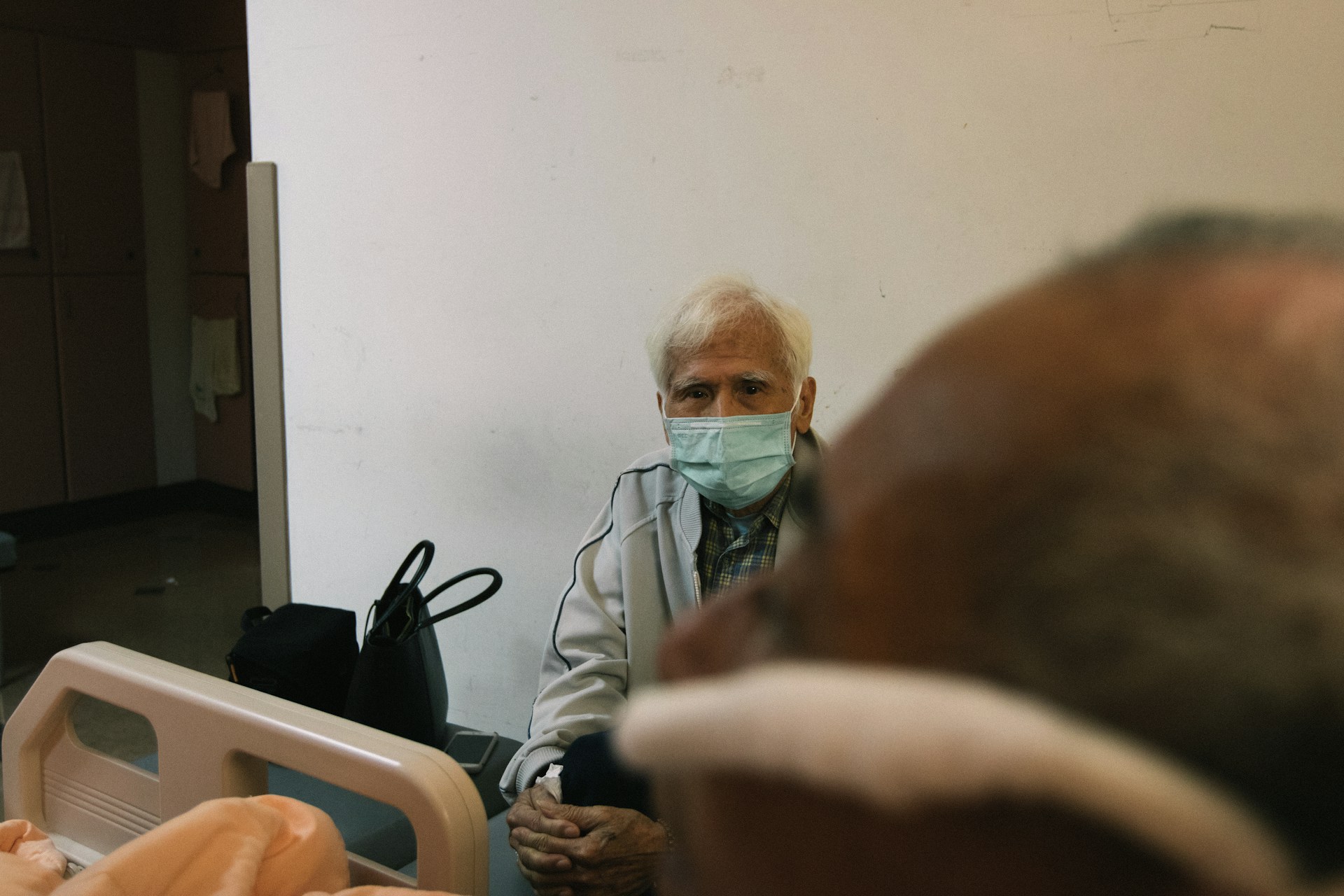The Potential of Blondo-Based Snack Bars and Sea Grape Flour Substitution to Support Athlete Performance
Potensi Snack Bar Berbasis Blondo dan Substitusi Tepung Anggur Laut untuk Mendukung Performa Atlet

Background: Sports injuries represented an unavoidable morbidity condition among athletes. Data from the 2016 Summer Olympics in Rio de Janeiro demonstrated that 1,101 out of 11,274 athletes (9.8%) experienced injuries, with 19% sustaining two or more types of injuries. In world championships, 81 injury cases per 1,000 athletes were recorded. Muscle injuries dominated 30-40% of cases in soccer players and more than 59% in weightlifters. Blondo, a coconut oil industry by-product, contained 16.9 g protein, 23.9 g fat, 31.8 g carbohydrates, and 341 kcal energy per 100 g. Sea grapes (Caulerpa Lentillifera) contained chlorophyll a and b, which functioned as antioxidants to protect body cells from post-exercise free radicals.
Objectives: This study aimed to analyze the chemical and sensory characteristics of blondo and sea grape-based snack bars.
Methods: The research employed a Completely Randomized Design with three formulas (F1: 50%, F2: 75%, F3: 100% blondo). Analysis included proximate testing, fiber content, antioxidant activity, and organoleptic testing.
Results: ANOVA analysis revealed that blondo addition did not significantly affect the measured variables (p-value>0.05). However, moisture, ash, protein, fat, and fiber content increased, while carbohydrate content decreased, potentially benefiting athletes. Additionally, decreased IC50 values indicated increased antioxidant activity with blondo addition.
Conclusions: Blondo and sea grapes demonstrated potential as sports food ingredients, with F3 being the most preferred formula, containing 518.5 kcal, 14.11 g protein, 27.17 g fat, and 54.27 g carbohydrates.
Guermazi, A. et al. Sports Injuries at the Rio de Janeiro 2016 Summer Olympics:Use of Diagnostic Imaging Services. Radiology 287, 922-932 (2018). Doi:https://doi.org/10.1148/radiol.2018171510
SantAnna, J. P. C., Pedrinelli, A., Hernandez, A. J. & Fernandes, T. L. Lesão Muscular:Fisiopatologia, Diagnóstico E Tratamento. Rev. Bras. Ortop. 57, 001-013 (2022). Doi:10.1055/s-0041-1731417
Indri Harta, L. & Nur Fata, R. Terapi Pasca Cidera Olahraga. COMSERVA J. Penelit. Dan Pengabdi. Masy. 2, 866-873 (2023). Doi:https://doi.org/10.59141/comserva.v2i6.527
Penggalih, M. H. S. T. et al. Pedoman Penatalaksanaan Gizi Atlet. (Gadjah Mada University Press, 2021).
Pangemanan, M., Moleong, M. & Kakombohi, H. Profil Status Gizi Atlet Pplp Sulut. Olymp. J. Pendidik. Kesehat. Dan Rekreasi 4, 245-250 (2023).
Rusydan, A. M. & Zulfaidah, N. T. Peptida Bioaktif:Menjelajahi Potensi dan Tantangan Menuju Pangan Masa Depan. J. Farm. SYIFA 2, 56-67 (2024). Doi:https://doi.org/10.63004/jfs.v2i2.461
Putri, N. R. & Dhanny, D. R. Literature Review:Konsumsi Energi, Protein, dan Zat Gizi Mikro dan Hubungannya dengan Performa Atlet Basket. Sport Nutr. J. 3, 14-24 (2022). Doi:https://doi.org/10.15294/spnj.v3i2.43290
Al Islamiyah, S., Tiffany, M. H. & Indrastuti, I. Pemanfaatan Produk Samping Pengolahan Minyak Kelapa Mandar (Blondo) di Desa Galung Lombok. J. Ilm. Pangabdhi 9, 96-100 (2023). Doi:https://doi.org/10.21107/pangabdhi.v9i2.19857
Widodo, S., Riyadi, H., Tanziha, I. & Astawan, M. Acceptance test of Blondo, Snakehead Fish Flour and Brown Rice Flour Based Biscuit Formulation. Int. J. Sci. Basic Appl. Res. IJSBAR 4531, 264-276 (2015).
Utami, T. P., Cakrawati, H. & Irramah, M. Potensi Farmakologi Makroalga Genus Caulerpa Bagi Pengembangan Obat Bahan Alam. J. Ilm. Farm. Attamru JIFA 2, 37-47 (2021). Doi:https://doi.org/10.31102/attamru.2021.2.2.37-47
Penggalih, M. H. S. T. et al. Marine-Derived Protein:Peptide Bioresources for The Development of Nutraceuticals for Improved Athletic Performance. Front. Sports Act. Living 5, 1281397 (2023). Doi:https://doi.org/10.3389/fspor.2023.1281397
Badan Standardisasi Nasional (BSN). Petunjuk Pengujian Organoleptik dan Sensori (SNI 01-2346).
Fikriyah, Y. U. & Nasution, R. S. Analisis Kadar Air dan Kadar Abu pada Teh Hitam yang Dijual di Pasaran dengan Menggunakan Metode Gravimetri. Amina 3, 50-54 (2021).
Susanto, A., Kartika, K., Fertiasari, R. & Sari, D. Food Bar Berbasis Tepung Pisang dan Mocaf sebagai Emergency Food. J. Food Secur. Agroindustry 1, 24-31 (2023). Doi:https://doi.org/10.58184/jfsa.v1i2.65
Sjarif, S. R. et al. Penggunaan Tepung Blondo dan Anuwun sebagai Substitusi Tepung Terigu terhadap Mutu Produk Suplementasi Gizi Berbentuk Cookies. Maj. Tek. Ind. 30, 1-12 (2022). Doi:https://doi.org/10.61844/majalahteknikindustri.v30i1.362
Apriyanto, M. Recovery Protein by Product Virgin Coconut Oil. J. Teknol. Pertan. 9, 14-18 (2020). Doi:https://doi.org/10.32520/jtp.v9i1.1009
Arifsyah, J., Dewi, D. P. & Wahyuningsih, S. Pengaruh Substitusi Tepung Talas (Colocasia esculenta) dan Tepung Beras Merah (Oryza nivara) terhadap Kadar Proksimat dan Kadar Zat Besi pada Mochi. Ilmu Gizi Indones. 5, 141 (2022). Doi:https://doi.org/10.35842/ilgi.v5i2.296
Raya, I., Augustyn, G. & Lopulalan, C. Karakteristik Kimia dan Sensori Kukis Berbahan Baku Tepung Mocaf dengan Tambahan Puree Jagung Kuning. Marsegu J. Sains Dan Teknol. 1, 38-48 (2024). Doi:https://doi.org/10.69840/marsegu/1.1.2024.38-48
Cicilia, S. et al. Karakteristik Cookies dari Tepung Terigu dan Tepung Biji Nangka Dimodifikasi Secara Enzimatis. J. Agritechnology Food Process. 1, 1-15 (2021). Doi:https://doi.org/10.31764/jafp.v1i1.5960
Atmaja, H. P., Setiyaningrum, Z., Wardana, A. S. & Mardiyati, N. L. Kadar Air dan Kalium Produk Energy Chews Kulit Buah Semangka dengan Penambahan Air Jeruk Lemon untuk Atlet. J. Sagu 21, 29 (2022). Doi:http://dx.doi.org/10.31258/sagu.21.1.p.29-37
Aulia Adha, R., Wisaniyasa, N. W. & Yusa, N. M. Pengaruh Penambahan Blondo Terhadap Karakteristik Flakes Tepung Beras Merah. J. Ilmu dan Teknol. Pangan ITEPA 10, 722 (2021). Doi:10.24843/itepa.2021.v10.i04.p17
Prasetyo, H. A. & Sinaga, R. E. Karakteristik Roti dari Tepung Terigu dan Tepung Komposit dari Tepung Terigu dengan Tepung Fermentasi Umbi Jalar Oranye. (2020).
Subroto, E. et al. The Analysis Techniques of Amino Acid and Protein in Food And Agricultural Products. 9, (2020).
Nielsen, S. S. Introduction to Food Analysis. in Nielsen’s Food Analysis (eds. Ismail, B. P. & Nielsen, S. S.) 3-14 (Springer International Publishing, Cham, 2024). Doi:10.1007/978-3-031-50643-7_1.
Rachmawati, D. O., Gunadi, I. G. A., Suswandi, I. & Risha, N. Pengolahan Buah Kelapa Menjadi VCO Berkualitas Bentuk Pemberdayaan Anggota Kwt Wirasa. J. Widya Laksana (2024). Doi:https://doi.org/10.23887/jwl.v13i1.51434
AbuMoh’d, M. F., Matalqah, L. & Al-Abdulla, Z. Effects of Oral Branched‐Chain Amino Acids (BCAAs) Intake on Muscular and Central Fatigue During an Incremental Exercise. J. Hum. Kinet. 72, 69-78 (2020). Doi:10.2478/hukin-2019-0099
Wijana, S., Perdani, C. G. & Angelina, T. Formulation of Vegetable Seasoning Made from Raw Material of Coconut Blondo Protein Hydrolysate. IOP Conf. Ser. Earth Environ. Sci. 475, 012035 (2020). Doi:10.1088/1755-1315/475/1/012035
Koapaha, T., Langi, T. M., Montolalu, M. H., Tooy, D. & Pinatik, H. F. Increasing the Value of Coconut Blondo in Potato Flour as a Basic Ingredient for Nutrition-Rich Biscuits as an Alternative to Stunting Prevention. Bp. Int. Res. Exact Sci. BirEx J. 6, 81-87 (2024). Doi:https://doi.org/10.33258/birex.v6i2.7861
Kole, H., Tuapattinaya, P. & Watuguly, T. Analisis Kadar Karbohidrat dan Lemak pada Tempe Berbahan Dasar Biji Lamun (Enhalus acoroides). Biopendix J. Biol. Pendidik. Dan Terap. 6, 91-96 (2020). Doi:https://doi.org/10.30598/biopendixvol6issue2page91-96
Fitri, A. S. & Fitriana, Y. A. N. Analisis Senyawa Kimia pada Karbohidrat. Sainteks 17, 45 (2020). Doi:10.30595/sainteks.v17i1.8536
Pontang, G. S. & Wening, D. K. Formulasi Snack bar Berbahan Dasar Tepung Mocaf dan Tepung Kacang Merah sebagai Makanan Selingan Bagi Atlet. J. Nutr. Coll. 10, 218-226 (2021). Doi:https://doi.org/10.14710/jnc.v10i3.29278
Pehlepi, E. S., Puspita, T. & Suwita, I. K. Pengembangan Tepung Tempe dan Bayam Hijau (Amaranthus Tricolor L) sebagai Bahan Substitusi Pepaya Sandwich Biskuit untuk Snack Remaja Putri Anemia. Nutr. J. 1, 36 (2022). Doi:https://doi.org/10.31290/nj.v1i2.3499
Ramadhani, I., Purwayantie, S. & Hartanti, L. Formulasi Blondo Minyak Kelapa dan Tepung Mocaf pada Pembuatan Cake. FoodTech J. Teknol. Pangan 4, 64 (2021). Doi:https://doi.org/10.26418/jft.v4i2.56922
Damongilala, L. J. Kandungan Gizi Pangan Ikani. (2021).
Yunita, L., Rahmiati, B. F., Naktiany, W. C., Lastyana, W. & Jauhari, M. T. Analisis Kandungan Proksimat dan Serat Pangan Tepung Daun Kelor dari Kabupaten Kupang sebagai Pangan Fungsional. Nutr. J. PanganGiziKesehatan 3, 44-49 (2022). Doi:https://doi.org/10.30812/nutriology.v3i2.2454
Lacey, J. et al. A Multidisciplinary Consensus on Dehydration:Definitions, Diagnostic Methods and Clinical Implications. Ann. Med. 51, 232-251 (2019). Doi:https://doi.org/10.1080/07853890.2019.1628352
Sujaryanti, S. Pemanfataan Blondo Menjadi Resep Olahan Makanan sebagai Peluang Usaha Masyarakat. J. Community Serv. Public Aff. 2, 85-91 (2022). Doi:https://doi.org/10.46730/jcspa.v2i3.45
Ramadhan, H., Baidah, D., Lestari, N. P. & Yuliana, K. A. Aktivitas Antioksidan Ekstrak Etanol 96% Daun, Buah dan Kulit Terap (Artocarpus odorratissimus) Menggunakan Metode Cuprac. Farmasains J. Ilm. Ilmu Kefarmasian 7, 7-12 (2020).
Pawestri, S. & Syahbanu, F. Teknik Enkapsulasi Antioksidan Melalui Pengeringan Semprot. J. Pertan. Agros 26, 5052-5066 (2024).
Kartika, D. Aspek Nutrisi Dalam Pemulihan Pasca-Latihan Fisik:Tinjauan Pustaka. J. Edukasimu 4, (2024).
Nareswari, T. L., Aziz, S., Septiani, W. & Muhyi, A. Pelatihan Pengolahan Blondo Menjadi Cookies untuk Penanganan Stunting di CV. Buah Asa Tani, Bangunrejo, Lampung. J. Kreat. Pengabdi. Kpd. Masy. PKM 7, 1980-1989 (2024).
Rachmawati, D. O., Suswandi, I. & Yasmini, L. P. B. Pendampingan Uji Kadar Air Kualitas VCO Berdasarkan Standar Nasional Indonesia Produksi Kwt Tunas Amerta. J. Widya Laksana 11, 158 (2022).
Dewi, D. P. Substitusi Tepung Daun Kelor (Moringa oleifera L.) pada Cookies Terhadap Sifat Fsik, Sifat Organoleptik, Kadar Proksimat, dan Kadar Fe. Ilmu Gizi Indones. 1, 104 (2018). Doi:https://doi.org/10.35842/ilgi.v1i2.22
Khairunnisa, K., Juanda, J. & Erika, C. Pengaruh Penambahan Ekstrak Kulit Manggis (Garcinia mangostana L.) dan Gula Aren terhadap Profil Sensori Deskriptif Cokelat Batang. J. Ilm. Mhs. Pertan. 7, 285-293 (2022). Doi:https://doi.org/10.17969/jimfp.v7i3.20846
Kiyat, W. E., Reynaldo, K., Irwan, J. & Saputra, E. Review:Pemanfaatan Bromelain pada Beberapa Pangan Lokal Indonesia. J. Agroteknologi 10, 33 (2019). Doi:http://dx.doi.org/10.24014/ja.v10i1.6515
Dimzon, I. K. D., Tantengco, G. B., Oquendo, N. A. & Dayrit, F. M. Profile of Volatile Organic Compounds (VOCs) from Cold-Processed and Heat-Treated Virgin Coconut Oil (VCO) Samples. in The 1st International Electronic Conference on Food Science and Functional Foods 85 (MDPI, 2020). Doi:https://doi.org/10.3390/foods_2020-07723
MAKANAN, K. B. P. O. D. Peraturan Badan Pengawas Obat dan Makanan Nomor 16 Tahun 2020 Tentang Pencantuman Informasi Nilai Gizi untuk Pangan Olahan Yang Diproduksi Oleh Usaha Mikro dan Usaha Kecil. (2020).
Copyright (c) 2025 Amerta Nutrition

This work is licensed under a Creative Commons Attribution-ShareAlike 4.0 International License.
AMERTA NUTR by Unair is licensed under a Creative Commons Attribution-ShareAlike 4.0 International License.
1. The journal allows the author to hold the copyright of the article without restrictions.
2. The journal allows the author(s) to retain publishing rights without restrictions
3. The legal formal aspect of journal publication accessibility refers to Creative Commons Attribution Share-Alike (CC BY-SA).
4. The Creative Commons Attribution Share-Alike (CC BY-SA) license allows re-distribution and re-use of a licensed work on the conditions that the creator is appropriately credited and that any derivative work is made available under "the same, similar or a compatible license”. Other than the conditions mentioned above, the editorial board is not responsible for copyright violation.






